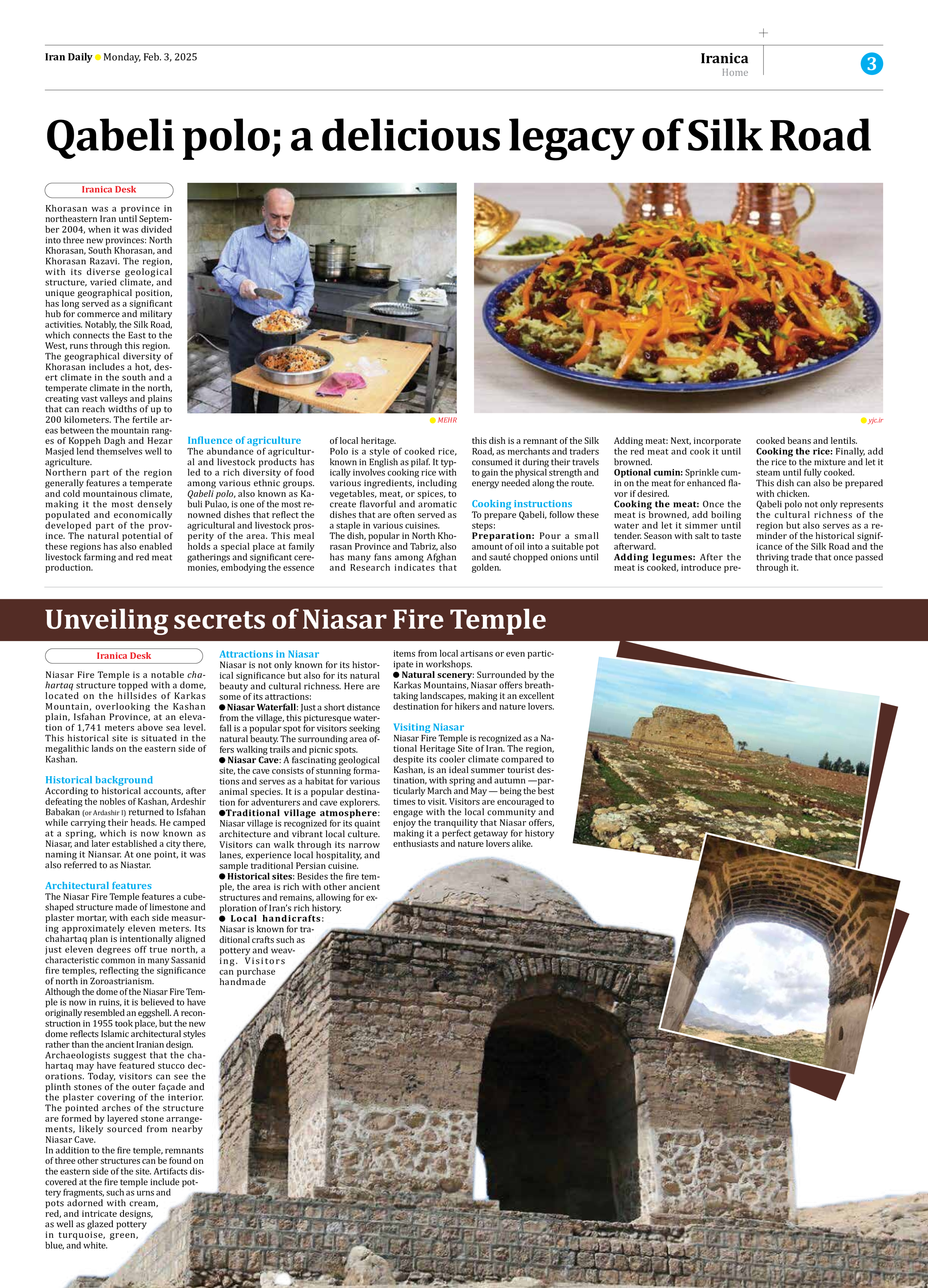
Unveiling secrets of Niasar Fire Temple
Niasar Fire Temple is a notable chahartaq structure topped with a dome, located on the hillsides of Karkas Mountain, overlooking the Kashan plain, Isfahan Province, at an elevation of 1,741 meters above sea level. This historical site is situated in the megalithic lands on the eastern side of Kashan.
Historical background
According to historical accounts, after defeating the nobles of Kashan, Ardeshir Babakan (or Ardashir I) returned to Isfahan while carrying their heads. He camped at a spring, which is now known as Niasar, and later established a city there, naming it Niansar. At one point, it was also referred to as Niastar.
Architectural features
The Niasar Fire Temple features a cube-shaped structure made of limestone and plaster mortar, with each side measuring approximately eleven meters. Its chahartaq plan is intentionally aligned just eleven degrees off true north, a characteristic common in many Sassanid fire temples, reflecting the significance of north in Zoroastrianism.
Although the dome of the Niasar Fire Temple is now in ruins, it is believed to have originally resembled an eggshell. A reconstruction in 1955 took place, but the new dome reflects Islamic architectural styles rather than the ancient Iranian design.
Archaeologists suggest that the chahartaq may have featured stucco decorations. Today, visitors can see the plinth stones of the outer façade and the plaster covering of the interior. The pointed arches of the structure are formed by layered stone arrangements, likely sourced from nearby Niasar Cave.
In addition to the fire temple, remnants of three other structures can be found on the eastern side of the site. Artifacts discovered at the fire temple include pottery fragments, such as urns and pots adorned with cream, red, and intricate designs, as well as glazed pottery in turquoise, green, blue, and white.
Attractions in Niasar
Niasar is not only known for its historical significance but also for its natural beauty and cultural richness. Here are some of its attractions:
Niasar Waterfall: Just a short distance from the village, this picturesque waterfall is a popular spot for visitors seeking natural beauty. The surrounding area offers walking trails and picnic spots.
Niasar Cave: A fascinating geological site, the cave consists of stunning formations and serves as a habitat for various animal species. It is a popular destination for adventurers and cave explorers.
Traditional village atmosphere: Niasar village is recognized for its quaint architecture and vibrant local culture. Visitors can walk through its narrow lanes, experience local hospitality, and sample traditional Persian cuisine.
Historical sites: Besides the fire temple, the area is rich with other ancient structures and remains, allowing for exploration of Iran’s rich history.
Local handicrafts: Niasar is known for traditional crafts such as pottery and weaving. Visitors can purchase handmade items from local artisans or even participate in workshops.
Natural scenery: Surrounded by the Karkas Mountains, Niasar offers breathtaking landscapes, making it an excellent destination for hikers and nature lovers.
Visiting Niasar
Niasar Fire Temple is recognized as a National Heritage Site of Iran. The region, despite its cooler climate compared to Kashan, is an ideal summer tourist destination, with spring and autumn —particularly March and May — being the best times to visit. Visitors are encouraged to engage with the local community and enjoy the tranquility that Niasar offers, making it a perfect getaway for history enthusiasts and nature lovers alike.







